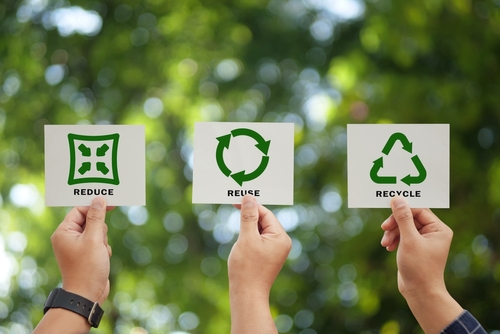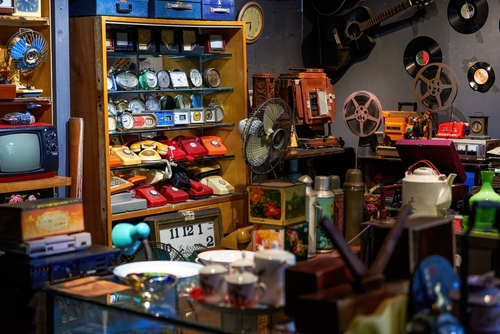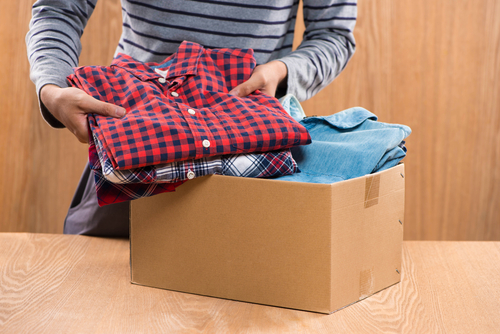Thrift stores are fantastic places to find unique secondhand and vintage items. However, there are specific types of donations that thrift stores often turn down. Mattresses, for example, are notorious breeding grounds for bedbugs and are frequently declined by most thrift shops. Additionally, personal care items like used makeup and toiletries are usually rejected due to hygiene concerns.
Another common category of declined items is electronics. Many thrift stores lack the resources to test and ensure that these items are in working order. Items such as particleboard furniture, which tends to be less durable and harder to resell, are also often turned away. This helps maintain the quality and attractiveness of the store’s inventory.
If you’re looking to donate, consider the condition and demand for your items. Thrift stores aim to provide high-quality secondhand goods, so donations should be clean, functional, and desirable. Knowing what items are usually rejected can save time and ensure your contributions are appreciated and utilized effectively.
 Identifying non-acceptable donations involves evaluating the item’s condition and cleanliness alongside current trends and demand for specific items.
Identifying non-acceptable donations involves evaluating the item’s condition and cleanliness alongside current trends and demand for specific items.
 When thrift stores turn down specific items, there are various other ways to find new homes or uses for them. Consider options like creative reuse, repurposing, and selling through online marketplaces or auction sites.
When thrift stores turn down specific items, there are various other ways to find new homes or uses for them. Consider options like creative reuse, repurposing, and selling through online marketplaces or auction sites.
Donating to thrift stores can significantly benefit your community while also decluttering your home. Ensure your donations are useful and welcomed by following these tips.
Key Takeaways
- Mattresses and personal care items are commonly declined.
- Electronics often get rejected due to lack of testing resources.
- Particleboard furniture is less likely to be accepted.
Understanding Thrift Stores
Thrift stores operate with a mission that often extends beyond simply selling secondhand items. They also play a vital role in promoting sustainability through recycling and reducing textile waste.The Mission of Thrift Stores
Thrift stores usually have a dual mission: providing affordable goods and supporting charitable causes. Many thrift shops are run by non-profit organizations, using the proceeds to fund various community programs. By shopping at these stores, you contribute to efforts such as job training, shelter services, and food programs. These initiatives significantly impact local communities. Moreover, certain thrift shops emphasize ethical practices, ensuring that the resale process is fair and beneficial to everyone involved.How Thrifting Supports Sustainability
Thrifting is an effective way to support sustainability. By purchasing secondhand items, you help divert waste from landfills, reducing the environmental impact associated with producing new goods. Thrift stores often collaborate with textile recyclers to manage unsellable clothing, repurposing or recycling these textiles to minimize waste. Additionally, the thrifting process extends the life of products, decreasing the demand for new resources. This has a positive effect on reducing carbon footprints and conserving natural resources. You also have the opportunity to find unique, vintage items, adding character to your wardrobe or home while supporting a more sustainable lifestyle.Key Items Thrift Stores Typically Reject
Thrift stores often refuse certain donations due to significant safety concerns or difficulty in selling bulky items. Understanding these limitations can help ensure your contributions are more likely to be accepted.Safety and Health Concerns
Many thrift stores reject items that pose potential health hazards. Mattresses are a prime example as they can harbor bedbugs and other pests, making them risky to resell. Similarly, car seats are frequently turned down. Even if they appear in good condition, there is no way to verify if they have been involved in accidents, making them unsafe. Household items like large appliances, especially those with electrical components, often face rejection. These items can be damaged or defective, posing fire hazards. Cribs and baby furniture are scrutinized because they may not meet current safety standards. Recall lists frequently include these items, and thrift stores must comply to avoid liability issues.Bulky and Hard-to-Sell Items
Bulky items, including large appliances and outdated electronics, are often declined by thrift stores due to their size and limited resale appeal. Refrigerators, washing machines, and old televisions fall into this category. Not only do these take up significant space, but they can also be expensive to repair or recycle. Certain types of furniture, such as sleeper sofas and large cabinets, are usually on the rejection list as well. These items are heavy and occupy valuable floor space. Fitness equipment like treadmills is also typically avoided. Such donations are cumbersome to handle, and there’s often limited demand for them in second-hand markets. Being aware of these common rejections can help make your donations more efficient and beneficial to thrift stores.How to Identify Non-Acceptable Donations
 Identifying non-acceptable donations involves evaluating the item’s condition and cleanliness alongside current trends and demand for specific items.
Identifying non-acceptable donations involves evaluating the item’s condition and cleanliness alongside current trends and demand for specific items.
Assessing Condition and Cleanliness
When preparing items to donate, assess their condition and cleanliness. Thrift stores prioritize items in excellent or good condition to ensure quality for their customers. Items with rips, stains, or significant wear are often unsuitable. Furniture, for instance, should be free from pet hair and stains. A sofa covered in pet fur will likely be rejected. Textiles with pet hair or damage like rugs and blankets also fall into this category. Hygiene items such as mattresses are a major concern due to their potential to harbor allergens or pests. Mattresses are usually not accepted because they can be breeding grounds for bedbugs as highlighted here.Understanding Trends and Demand
Thrift stores also consider trends and demand when accepting donations. Items that are outdated or no longer in demand may not be accepted. For example, while some electronics might be useful, older models of appliances or technology that are not functional or can’t be sold quickly may be turned down. Larger appliances, like refrigerators and ovens, typically aren’t accepted due to the challenges in testing and reselling them. Similarly, chemicals and potentially hazardous materials are unsuitable for donation due to safety concerns and legal restrictions. Staying informed about what items are currently in demand at your local thrift store can help ensure your donation will be accepted and appreciated.The Life Cycle of a Donation
Understanding the journey your donated items take can help you appreciate the efforts made by thrift stores to recycle and resell goods while minimizing waste. Each item goes through several stages, from collection to final disposal or recycling.From Collection to Retail Floor
When you donate items to a thrift store, they first go through an initial sorting process. Here, donations are inspected for quality and usability. Items in good condition are cleaned and priced. They are then displayed on the retail floor for purchase. Clothing and household goods make up a large portion of donations. Stores like Goodwill and the Salvation Army often prioritize maintaining a well-organized retail environment to attract buyers. Items are regularly rotated to make room for new donations. Thrift stores generally accept a wide range of goods but have restrictions on certain items, like mattresses and large appliances. These items are often declined due to health and safety concerns.Recycling and Disposal of Unsellable Items
Not all donated items find a new home through resale. Items that do not sell within a certain period are removed from the retail floor. These items then enter the salvage stream. Salvageable items may be sent to textile recyclers. Here, they can be repurposed into materials such as rugs, insulation, or industrial textiles. This process keeps a significant amount of waste out of landfills. Items deemed unsellable and non-recyclable are disposed of responsibly. Thrift stores strive to minimize environmental impact by recycling whenever possible. They collaborate with local recycling centers and waste management services to ensure proper disposal methods are followed.Alternative Avenues for Rejected Items
 When thrift stores turn down specific items, there are various other ways to find new homes or uses for them. Consider options like creative reuse, repurposing, and selling through online marketplaces or auction sites.
When thrift stores turn down specific items, there are various other ways to find new homes or uses for them. Consider options like creative reuse, repurposing, and selling through online marketplaces or auction sites.
Creative Reuse and Repurposing
Rejected items can often be creatively reused or repurposed. For example, mattresses and pillows that thrift stores won’t accept might serve well in home projects. Old furniture can be transformed with a bit of DIY effort. Wooden pallets can become garden planters, and worn-out clothing can be turned into fabric for crafts. Crafty individuals can find a wealth of project ideas on platforms like Pinterest. Participating in local upcycling workshops or community art projects can also be beneficial. Thrift store rejects can quickly become unique and functional household items with creativity and resourcefulness.Online Marketplaces and Auction Sites
Utilizing online platforms such as eBay and Etsy can be a great way to sell items that thrift stores won’t accept. Ebay is perfect for vintage electronics or collectibles, while Etsy caters to handmade and vintage goods. Facebook Marketplace is another excellent venue for quick local sales. Craigslist remains a reliable alternative for selling larger items like furniture and appliances. Consider hosting a garage sale, which provides a direct way to sell unwanted items. It allows you to engage with buyers personally and often results in quick sales, especially if items are priced to go. Just be sure to market your sale effectively using local classifieds and social media.Impact of Technology on Thrift
Technology has significantly changed the thrift shopping landscape, making price comparisons easier and enhancing the influence of social media platforms on shopping trends and pop culture.Price Comparison and Research Tools
Modern thrift stores are leveraging price comparison and research tools to streamline operations and provide better customer service. These tools allow you to easily compare prices of secondhand items across various platforms, ensuring you get the best deals. With apps and websites that consolidate resale prices, you can research the fair market value of thrifted goods. This technology aids both buyers and sellers. For buyers, it guarantees more informed decisions and fair pricing. Sellers benefit from having data-driven pricing strategies, making their inventory more appealing and competitively priced. These tools also empower you to track price trends over time, helping you spot when certain items might become more affordable or valuable.Social Media Influence
Social media platforms like Instagram have greatly influenced thrift shopping, integrating it into the fabric of pop culture. Influencers and fashion bloggers often showcase their thrift finds, encouraging their followers to explore secondhand shopping as a sustainable alternative to fast fashion. You can follow hashtags and trending keywords to discover thrift store gems. This exposure has increased awareness and acceptance of thrift shopping, making it a trendy activity rather than a necessity driven by financial constraints. Moreover, social media campaigns by thrift stores highlight their unique offerings, new arrivals, and special deals. This real-time marketing taps into the instant gratification culture of online shopping, making you more likely to visit and purchase from thrift stores.Dos and Don’ts of Donating
Dos:- Inspect and Clean: Always check items for any flaws, stains, or damage. Thrift stores often only accept goods in clean, working condition.
- Organize: Sort and label items into categories such as clothes, shoes, media, housewares, and toys. Use sturdy containers for transport.
- Contact Stores: Before dropping off large items, contact your local thrift store to confirm they can accept those donations. This helps avoid unnecessary trips and ensures your items are put to good use.
- Avoid Unhealthy Items: Don’t donate broken, stained, or soiled items, as thrift stores can’t sell these. This includes damaged electronics and appliances.
- Say No to Mattresses: Many thrift stores don’t accept mattresses due to hygiene concerns and potential bedbug issues. This is crucial to remember to save time and effort.
- Skip Hazardous Materials: Do not donate items like chemicals, explosives, or anything that could pose a safety risk. Stores will refuse these items, and proper disposal must be considered.
Establishing Relationships with Local Stores
Regular Donations: Build rapport by making regular, high-quality donations. Thrift stores appreciate dependable donors and this may also help you stay informed about what items are needed most. Volunteer Opportunities: Consider volunteering at your local thrift store. This helps you understand their operations and needs better. It also strengthens your relationship and benefits the community. Stay Updated: Join newsletters or social media pages of your local thrift store. This keeps you updated on store policies, special needs, and donation guidelines, ensuring your contributions are always relevant and appreciated. Direct Communication: Don’t hesitate to ask store managers or staff for specific needs or preferences when it comes to donations. Clear communication ensures your efforts are beneficial and aligned with the store’s goals. Following these guidelines helps ensure that your donations are valuable and welcomed, fostering stronger community ties.Legal and Regulatory Considerations
When running a thrift store, it’s important to comply with various regulations. This includes ensuring consumer products meet safety standards and understanding the tax obligations related to donations.Consumer Product Safety Standards
In the United States, thrift stores must ensure that all items meet consumer product safety standards. This includes avoiding the sale of items that may be hazardous, such as recalled products or those not meeting federal safety regulations. Children’s items, in particular, must adhere to strict guidelines. For instance, cribs and toys must comply with the Consumer Product Safety Improvement Act (CPSIA), which mandates that these items be lead-free and meet specific performance standards. The Consumer Product Safety Commission (CPSC) maintains a list of recalled items. You should regularly consult this list to ensure you do not inadvertently sell unsafe products. Electrical items and appliances must also be tested to ensure they are safe for use. Additionally, it’s prudent to have a policy to turn down items that may pose a safety risk, such as outdated electronics, certain types of furniture, and any item lacking proper labeling.Tax Implications of Donating
Accepting donations comes with tax implications for both your thrift store and the donors. If your thrift store operates as a nonprofit organization, you are required to provide donation receipts for donated items valued at over $250. This helps donors claim deductions on their federal income taxes. Be aware of the regulations set forth by the IRS, including maintaining accurate records of all donations received. This includes the donor’s information, the value of the donated items, and the date of donation. For the thrift store, donated items are typically not taxed as income. However, you must ensure that your store’s financial records are meticulously kept, segregating revenue from donations and sales. Understanding these tax implications can help in fostering a good relationship with donors and maintaining compliance with federal tax laws.Frequently Asked Questions
Thrift stores have specific guidelines for donations. Understanding what they typically accept or reject can help ensure your donations are useful and welcomed.Which items are commonly rejected by thrift stores when donated?
Thrift stores often reject items that are damaged, stained, or broken. Large appliances, hazardous materials, and non-functional electronics are also frequently turned down.What kind of donations does the Salvation Army typically decline?
The Salvation Army usually declines items such as mattresses, large appliances, and hazardous materials like paint or chemicals. They also do not accept weapons or items that cannot be resold due to safety concerns.Are there certain items that Savers will not accept for donation?
Savers are known to decline items that pose health or safety risks, such as used mattresses, broken furniture, and hazardous materials. They also avoid accepting large appliances and items that cannot be resold.What types of clothing are generally not suitable for thrift store donations?
Thrift stores generally do not accept clothing that is excessively worn, stained, or torn. Undergarments and socks are also typically rejected unless they are new and still in packaging.Can you list items that are not accepted at most thrift stores despite being recyclable?
Items such as old electronics, batteries, and certain plastics are not usually accepted at thrift stores. Although recyclable, these items often require special disposal methods.What are the best-selling items at thrift stores, implying which donations are most likely to be accepted?
Items such as gently used clothing, books, furniture, and home decor are among the best-selling at thrift stores. These popular items are typically always in demand and readily accepted. For any specific inquiries, you can refer to the thrift frequently asked questions page for further details.RECENT BLOGS
 A Homeowner’s Guide to Flash Flood Preparation, Cleanup, and Long-Term Protection
A Homeowner’s Guide to Flash Flood Preparation, Cleanup, and Long-Term Protection
Date: May 27 ,2025
 Everything You Need to Know About Garbage Bin Rental: Sizes, Costs, and Practical Tips for Every Project
Everything You Need to Know About Garbage Bin Rental: Sizes, Costs, and Practical Tips for Every Project
Date: May 14 ,2025
 Safe Disposal Methods for Refrigerators: Recycling, Donation, and Removal Options
Safe Disposal Methods for Refrigerators: Recycling, Donation, and Removal Options
Date: April 29 ,2025
Our Reviews
LATEST BLOGS









